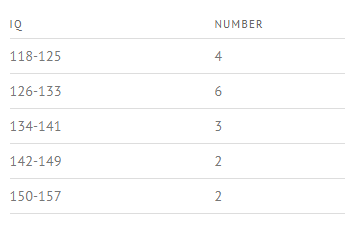how to find class limits

A frequency distribution table showing a class width of 7 for IQ scores (e.g. 125-118 = 7)
Class width refers to the difference between the upper and lower boundaries of any class (category). Depending on the author, it's also sometimes used more specifically to mean:
- The difference between the upper limits of two consecutive (neighboring) classes, or
- The difference between the lower limits of two consecutive classes.
Note that these are different than the difference between the upper and lower limits of a class.
Calculating Class Width in a Frequency Distribution Table
Watch the video to find out how to calculate class width:
Can't see the video? Click here.
In a frequency distribution table, classes must all be the same width. This makes it relatively easy to calculate the class width, as you're only dealing with a single width (as opposed to varying ones). To find the width:
- Calculate the range of the entire data set by subtracting the lowest point from the highest,
- Divide it by the number of classes.
- Round this number up (usually, to the nearest whole number).
Example of Calculating Class Width
Suppose you are analyzing data from a final exam given at the end of a statistics course. The number of classes you divide them into is somewhat arbitrary, but there are a few things to keep in mind:
- Make few enough categories so that you have more than one item in each category.
- Choose a number that is easy to manipulate; usually, something between five and twenty is a good idea. For example, if you are analyzing a relatively small class of 25 students, you might decide to create a frequency table with five classes.
Example: Find a reasonable class with for the following set of student scores:
52, 82, 86, 83, 56, 98, 71, 91, 75, 88, 69, 78, 64, 74, 81, 83, 77, 90, 85, 64, 79, 71, 64, and 83.
- Find the range by subtracting the lowest point from the highest: the difference between the highest and lowest score: 98 – 52 = 46.
- Divide it by the number of classes: 46/5, = 9.2.
- Round this number up: 9.2≅ 10.
References
Gleaton, James U. Lecture Handout: Organizing and Summarizing Data. Retrieved from http://www.unf.edu/~jgleaton/LectureTransCh2.doc on August 27, 2018.
Gonick, L. (1993). The Cartoon Guide to Statistics. HarperPerennial.
Jones, James. Statistics: Frequency Distributions & Graphs. Retrieved from https://people.richland.edu/james/lecture/m170/ch02-def.html on August 27, 2018.
Levine, D. (2014). Even You Can Learn Statistics and Analytics: An Easy to Understand Guide to Statistics and Analytics 3rd Edition. Pearson FT Press
------------------------------------------------------------------------------
Need help with a homework or test question? With Chegg Study, you can get step-by-step solutions to your questions from an expert in the field. Your first 30 minutes with a Chegg tutor is free!
Comments? Need to post a correction? Please post a comment on our Facebook page .
how to find class limits
Source: https://www.statisticshowto.com/probability-and-statistics/descriptive-statistics/frequency-distribution-table/class-width/
Posted by: cisnerosthatten.blogspot.com

0 Response to "how to find class limits"
Post a Comment